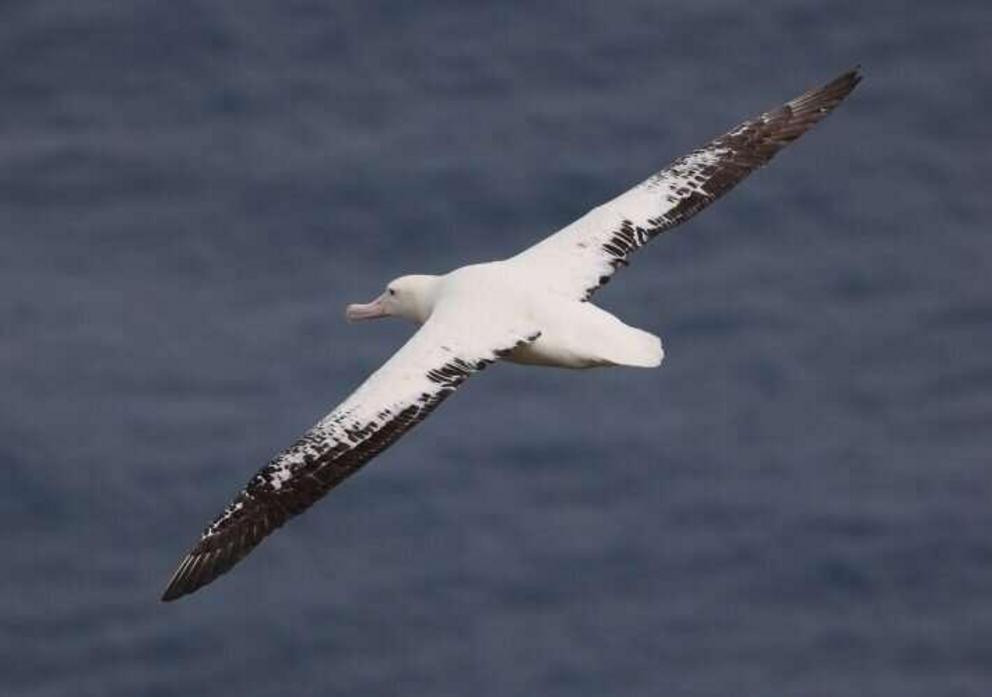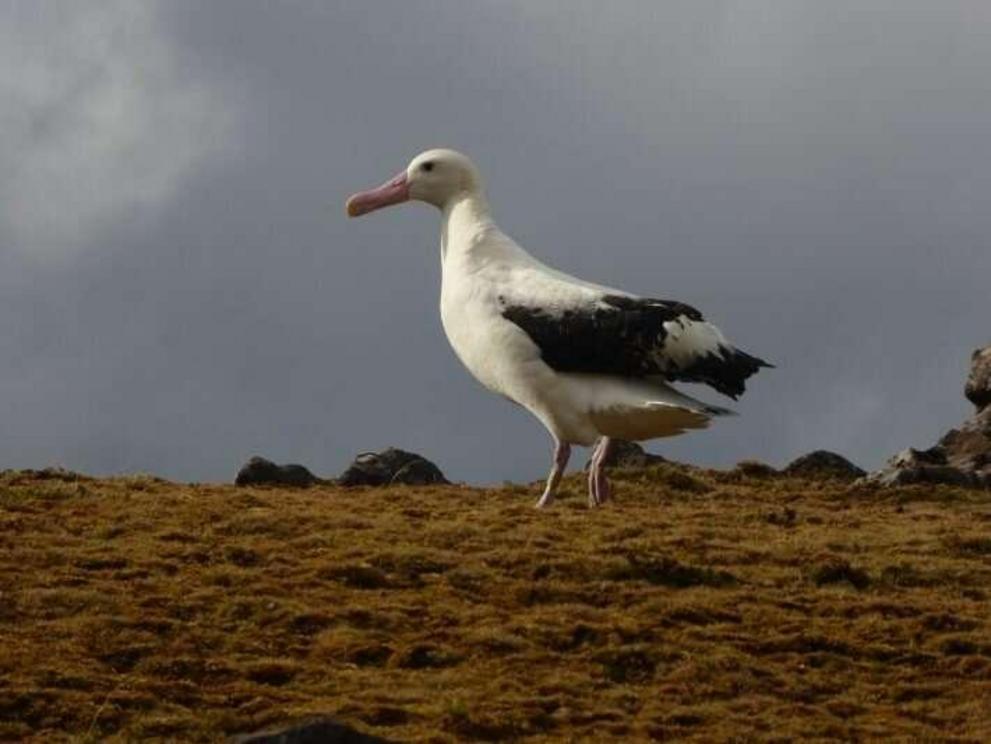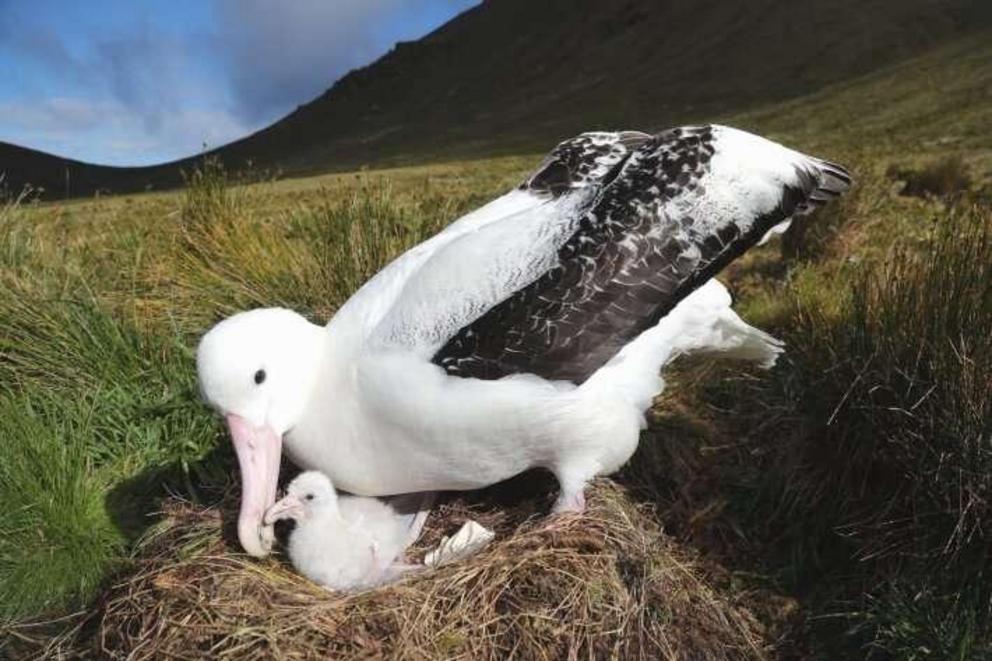Albatross populations are declining due to invasive mouse species
The critically endangered Tristan albatross may suffer greater consequences from mouse predation than previously thought.
New research published in the Journal of Applied Ecology, shows long-lived species may suffer greater impacts from predation than was previously thought.
Researchers have utilized a sophisticated population model, which is not constrained to analyzing only breeding pairs, to shed light on decades-long confusion surrounding the impact of invasive mice on the critically endangered Tristan albatross. Because this new research is not constrained to analyzing only breeding pairs, it uncovers previously missed population declines.
Conservation organizations are often plagued by limited resources and thus struggle to directly assist all threatened species. Decisions over where to allocate resources and spending therefore pose a common problem.
The rate at which a species is decreasing is often a good indicator as to how urgent it is to intervene. A new study published this week, however, shows that for long-lived species, a population may decrease long before this trend becomes evident in previous population studies.
Albatrosses are among the largest flying birds in the world, and can live to an incredibly old age, with one female named Wisdom, who was tagged over 65 years ago, still breeding today. Albatrosses achieve this long life by reproducing very slowly—they often need 5-15 years before they can start breeding. In the largest species, a breeding pair can only raise one chick every 2 years, as it takes almost 12 months for the chick to grow large enough to fly, and parents need a long rest between raising chicks.
Despite being amongst the largest of birds, albatrosses are threatened by some of the smallest mammals—mice. On several islands such as Gough (UK Overseas Territory of Tristan da Cunha), Marion (South Africa) or Midway (U.S.), introduced non-native house mice (Mus musculus) eat albatross chicks and sometimes even adults. Albatross species breeding on these islands have very low breeding success as many chicks are lost to predation.
 The critically endangered adult Tristan albatross in flight.
The critically endangered adult Tristan albatross in flight.
Knowledge of this problem dates back two decades, yet the consequences of mouse predation have before been difficult to evaluate due to the albatrosses' long lifespan. As in many seabird species, only a portion of the overall population, typically the breeding adults, are considered in population research. The researchers identified that this lack of considered data may add to difficulties in assessing population trends and potential benefits of conservation action such as the management of predatory invasive species.
Since monitoring began in 2004, the critically endangered Tristan albatross (Diomedea dabbenena) has lost on average half of each season's chicks to mouse predation. Yet, over the same period, the breeding population has remained remarkably stable at approximately 1500 pairs every year.
Conservationists have been left confused as to what impact mouse predation has on albatross populations. The eradication of mice from Gough Island, the main albatross breeding site, would prove an ambitious operation—though the question remains: What benefits would such a project provide to albatross populations?
A new paper published this week in the Journal of Applied Ecology provides a compelling answer. A consortium of researchers funded by the Agreement on the Conservation of Albatrosses and Petrels used a sophisticated population model which no longer constrains research to just the breeding adults. This model accounts for all the young albatrosses, as well as adults taking a break from breeding, that roam the southern oceans and can therefore not be counted by ornithologists.
As opposed to previous studies, the scientists found that the total population of the Tristan albatross has in fact decreased by more than 2000 birds since 2004, despite the stable number of breeding pairs.
Extrapolating 30 years into the future, the researchers further concluded that eradicating mice from their main breeding island would most likely result in a Tristan albatross population that was 2-8 times larger in 2050 than if the mice remained.
 This Tristan albatross wears a leg ring for identification.
This Tristan albatross wears a leg ring for identification.
The population projections come with large uncertainty, though—mostly because it is very difficult to know whether young albatrosses are still alive. After fledging, albatrosses spend 2-20 years at sea where they cannot be accounted for. This uncertainty renders the estimates of population size somewhat imprecise, and when extrapolating the population 30 years into the future, the range of uncertainty spans several thousand birds. Nonetheless, the new estimates are the most robust yet and provide a lot of new information for guiding management decisions.
Bethany Clark, BirdLife International Seabird Science Officer, said, "It is incredibly difficult to monitor albatrosses because a large part of the population is always away from the breeding colony. The sophisticated population model in this study overcomes some of these challenges and gives managers quantitative evidence of the impact of invasive mice and the potential benefits of eradication."
Anton Wolfaardt, Project Manager for Mouse-free Marion, added, "This new study is incredibly important for Marion Island, where mice also kill albatrosses. It confirms the importance of eradicating mice on Marion Island to restore and secure a positive conservation future for the island's globally important albatross populations."
John Cooper, Information Officer of the Agreement on the Conservation of Albatrosses and Petrels, stressed the importance of implementing these findings in future conservation efforts.
"Besides the persisting problems of albatross bycatch in fisheries, this study gives us hope that some albatross populations can be restored with technically feasible management actions that can be implemented now if governments honor their commitments under the Convention of Migratory Species and financially support these efforts."
Overall, the conclusions from the study support the decision that investing in a mouse eradication on islands where mice kill albatrosses is likely to be a highly effective strategy to restore populations of these ocean wanderers.
More information: Steffen Oppel et al, Cryptic population decrease due to invasive species predation in a long‐lived seabird supports need for eradication, Journal of Applied Ecology (2022). DOI: 10.1111/1365-2664.14218
Journal information: Journal of Applied Ecology
Provided by British Ecological Society

